Orange Cultivation Guide:
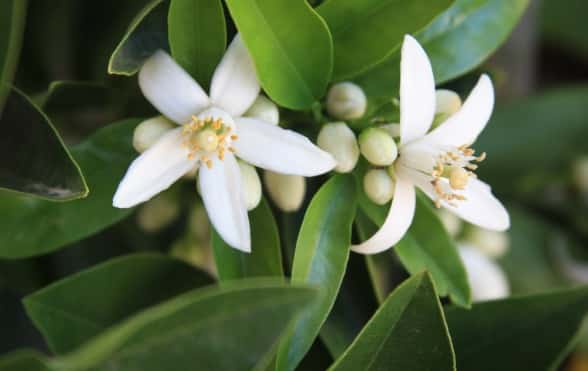
Introduction of Orange Cultivation:- Orange is one of the top citrus fruits being grown in most of the countries after banana and apple.The most important commercial citrus species are mandarin, sweet orange and acid lime. In this article, we present about growing sweet oranges/mandarin oranges.Oranges have great economic importance due to its wide range of uses and benefits. This fruit is rich in vitamins like C, A, B and phosphorus. Oranges can be consumed fresh or in the form of juice, squash, syrup and jam. Oranges are main source of peel oil, citric acid and cosmetics. These orange products have an excellent value in the international market. Orange tree belongs to the family of “Rutaceae” and genus of “Citrus”. There are several different types of sweet oranges grown across Asia and other parts of world. However, one of the most common types is called the “Valencia” orange. This cultivar (variety) comes from Spain and is also grown in Africa and Australia. Mandarin Orange is another variety which is very famous in Indian citrus cultivation.The ‘sweet orange’ is the kind that is most often eaten today in the world. Actually the sweet oranges are grown first in Asia but now grow in many parts of the world. Oranges are round orange-coloured fruits that grow on a tree which can reach up to 10 meters of height. Orange trees have dark green shiny leaves and small white flowers with five petals. The orange tree flowers smell very sweet and attract many bees. Oranges can be grown in pots, containers even in backyards. Commercial cultivation of oranges is very much successful and profitable when proper cultivation practices are followed. Pest and disease management is very important in orange cultivation as these plants are more prone to different pests and diseases.
Major Orange Production Countries:- The top 10 orange production countries are given below.
1. Brazil.
2. USA.
3. China.
4. India.
5. Mexico.
6. Spain.
7. Egypt.
8. Turkey.
9. Italy.
10. South Africa.
Note: In Asia, India is the second producer of oranges next to China and In India, oranges are primarily grown in the states of Maharashtra, Andhra Pradesh, Telangana, Punjab, Karnataka, Tamil Nadu, Kerala Uttaranchal, Bihar, Orissa, Assam and Gujarat.
Health Benefits of Orange:- The following are some of the health benefits of oranges.

- Oranges are good source of vitamin ‘C’.
- Oranges are good for skin health.
- Oranges are good for eye health.
- Oranges prevent cancer.
- Oranges regulate high blood pressure.
- Oranges good for heart health.
- Oranges lower the cholesterol.
- Oranges reduce the risk of liver cancer.
- Oranges help in relieving constipation.
- Oranges promote healthy body tissues.
- Oranges are good for bone and teeth health.
- Oranges boost immune health.
- Oranges are good for digestion.
- Oranges help in fighting against infections.
- Oranges are good for kidney health.
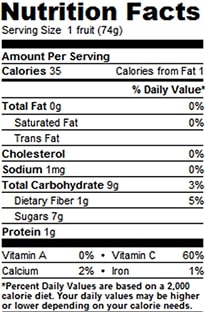
Orange Cultivars (Varieties):- There are many improved varieties developed for each region. Find out pest and disease resistant and high yielding cultivar from local horticulture department.
Some Important cultivars grown in India are: Jaffa, Hamlin, Nagpur Santra (mandarin), Coorg Santra, Valencia, Blood Red, Mosambi,Sathukudi (Satgudi), Khasi Santra, Mudkhed, Shringar, Butwal, Dancy, Kara , SZ-IN-COM, Darjeeling Mandarin, Sumithra mandarin, Seedless-182 and Kinnow mandarin.
Orange Names in other Parts of World Languages:- Sinaasappel (Dutch), Apfelsine (German), Жүрж (Mangolian), Pomarańcza (Polish), òr-mheas (Scottish), oranji (Somali), Portokall (Albanian), Narandža (Bosnian), Apelsinipuu (Apelsinipuu), πορτοκάλι (Greek), oráiste (Irish), 오렌지 (Korean), larinġa (Maltese), Suntalā (Nepali), laranjeira (Portuguese), Поморанџа (Serbian), Naranja (Spanish), Пўртаҳол (Uzbek), برتقال (Arabic), Portokal (Bulgarian), chéngzi (Chinese), Kahel (Filipino), Arancio (Italian), نارنگی (Kurdish), 桔子 (Mandarin), Appelsin (Norwegian), Jeruk (Sundanese), ส้ม (Thai), Cam (Vietnamese), Narinch (Armenian), Mikan / orenji (Japanese), Apelsīns (Latvian), Portocală (Romanian), දොඩම් (Sinhalese), ក្រូចពោធិ៍សាត់ ( Cambodian), Pomeraňc (Czech), l’orange (French), Портокал (Macedonian), апельсин (Russian), Pomaranč (Slovak), appelsin (Swedish), Portakal (Turkish),iwolintshi (Zulu), Appelsin (Danish), ნარინჯის (Georgian), Narancs (Hungarian), Pokok limau (Malay), porteqāl (Persian), Pomaranča (Slovenian), liwtefng (Taiwanese), Апельсин (Ukrainian).
Local Names of Orange in India:- Narangi / Santra (Hindi), தோடம்பழம் (Tamil), Naaranga / മധുരനാരങ്ങ (Malayalam), Kamala pandu (Telugu), Kittale hannu (Kannada), Santara (Punjabi), Kamala (Oriya), Santre (Marathi), Komola (Assamese), Kamala lebu (Bengali), Sangtar (Kashmiri), Sangtaraa (Urdu), નારંગી / Narangi (Gujarathi).
Climate Required for Orange Cultivation:- Oranges can be grown both in tropical and sub-tropical climatic conditions up to 1,500 meter(above m.s.l.). However, dry climate with a soil temperature around 25 °C would be optimum for plant root growth. When it comes to best crop growth, dry and arid conditions coupled with well defined summer having low rainfall ranging from 75 cm to 250 cm are most favourable conditions. Orange crop is very sensitive to frost conditions and high humid conditions caused to spread many diseases. The other risk involved in the orange cultivation is, during hot summer, hot winds causes the crop to shed the flowers and young fruits. For achieving good yield of the crop, it is necessary to maintain good temperatures throughout its growth period.
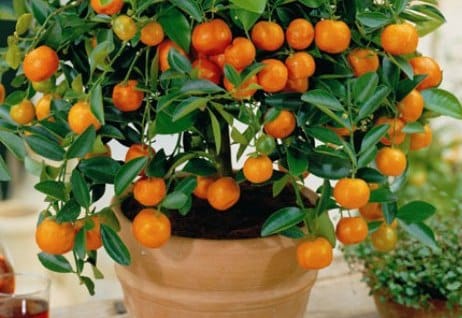
Soil Requirement for Orange Cultivation:- Oranges can be grown in wide variety of soils such as alluvial, sandy loam to loam, red sand soils to black clayey soils.. However, soil properties like soil reaction, soil fertility, drainage, free lime and salt concentrations are some important factors of soil to be used for orange cultivation. Deep and well-drained light loamy soils are the best for orange plantation. Soil pH of 6.0 to 7.5 is the best for orange cultivation. If the crop is planned on large scale or commercial line, one should consider going for soil testing to find out the suitability and fertility of the soil.
Selection of Site and Land Preparation for Orange Cultivation:- Site selection and land preparation is very important in orange cultivation. When this crop is grown commercially, make sure the site is closer to markets and has transport facility. As the flower and fruit drops are common during summer due to hot winds, it is advised to provide windbreaks on the sides from which heavy winds are possible. One can go for growing eucalyptus, Jamun (Plum) and Mulberry trees for windbreaks.
When it comes to land preparation, using tractor, land should be cross ploughed and levelled by crushing any clods. Make sure all the weeds from previous crops are removed.
Planting Season for Orange Cultivation:- In South East Asia, Orange seedlings are mostly transplanted to main field after commencement of monsoon (month of July-August). Budding should preferably be done in last week of January month or first week of February month following the ‘T’ or shield budding method.
Propagation, Planting and Spacing in Orange Cultivation:- Orange trees are propagated by seeds and vegetatively propagated by T-budding. However, Budded plants are the best planting materials for quick growth and high yielding. When it comes to planting Pits size of 75 cm x 75 cm x 75 cm at 7 meter x 7 meter spacing should be dug and filled the pits with top soil and 10 kg of well decomposed farmyard manure (FYM). Budded plants should be placed in the center of the pits and staked. Usually, spacing depends on cultivar, soil type and type of method followed. For high density planting, spacing would be less. Usually for closed spacing accommodating 120 plants per 1 acre has been considered. Irrigation should be carried out immediately after transplanting the material in the field.
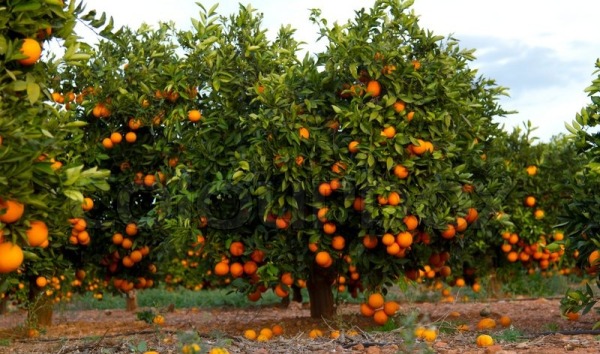
Irrigation in Orange Cultivation:- Irrigation is critical step in orange cultivation as usually citrus trees require more water when compared to other fruit crops due to recurrent growth and development. Irrigation depends on factors like soil type, climatic conditions and age of plants. Irrigation should be applied at every 5-8 days interval from March to June and at every 9-12 days interval during November-February. Orange plants are sensitive to water stagnation; hence water logging the tree trunk should be avoided. Irrigate the orange orchard after transplanting. A grown-up orange tree requires about 20-25 irrigations in a year, amounting about 1,400 mm of water. It is recommended to go for drip irrigation as it has many advantages. The advantages of drip irrigation system are as given below.
- Irrigation or amount of water is controlled and can be supplied as per requirement.
- Drip irrigation makes the water to be applied at the plant root system.
- As systematic watering, this improves plant growth and quality and yield of the crop.
- Water wastage is reduced about 60% when compared to flood irrigation.
- As water is supplied at root system, fertilizers applied at roots are used very efficiently.
- This reduces the soil erosion and nutrients when compared to flood irrigation.
- Land levelling work is minimized so the labour requirement.
- Drip irrigation helps in reducing weeds, pests and diseases.
- Crops can be grown any time with drip irrigation.
Manures and Fertilizers in Orange Cultivation:- Orange trees respond very well to manures and fertilizers, applying these nutrients at right stages will result in high yields. The following table describes the N: P: K nutrient requirement in orange cultivation.
| Age of the Plant in years. | N (grams/plant). | P (grams/plant). | K (grams/plant). | Farm yard manure (FYM) in Kg’s. |
| 1 | 150 | 50 | 25 | 10 |
| 2 | 300 | 100 | 50 | 15 |
| 3 | 450 | 150 | 75 | 20 |
| 4 and above | 600 | 200 | 100 | 30 (increase 5 kg of FYM every year). |
How to apply these? 1/3rd of recommended dose of nitrogen (N) should be applied through organic manures like well decomposed farm yard manures (FYM) and cakes.
- In case of non-bearing trees: Nitrogen (N) should be applied in split doses during April, August and November; phosphorus in August and November and potassium in November.
- In case of bearing trees: Nitrogen (N) should be applied in 3 split doses during April, August and November along with 200 grams of phosphorus in 2 split doses in August and November and 100 grams of potassium in November for oranges grown in black clay soil.
Micro-Nutrients: Based on the soil test results, any micro-nutrient deficiencies should be covered. Zinc, copper, manganese, iron, boron and molybdenum micro-nutrients are required for best growth of the plants. Application of these micro-nutrients should be carried through foliar spraying.
Intercultural Operations in Orange Cultivation:- Carrying regular intercultural operations play important role in higher crop yield. As part of this, weed growth should be controlled by mulching. Regular ploughing between tree rows for removing grass weeds. Spading of tree basins should be carried for proper soil aeration and fertilizers absorption. Chemical weedicides are also effective in controlling weeds.
Mulching in Orange Cultivation:- Mulching is another important task for soil moisture conservation and erosion control. Apart from this, mulching also helps in controlling weed growth and turning into organic matter. This also reduces the number of irrigation by preventing water evaporation. Mulch material like paddy husk or dry leaves with thickness of 7 to 8 inch can be used in tree basins.
Inter-crop in Orange Cultivation:- Orange growers can earn some extra income by opting for intercropping. Legumes and any vegetable crops can be grown as inter crops during pre-bearing stage (During Initial 3 year period). However, make sure the inter crops don’t compete with nutrients provided for orange trees. When growing inter crops, it may need extra care, manures, irrigation along with orange orchard maintenance.
Training and Pruning in Orange Cultivation:- Training and pruning task is very important and this directly impacts the fruit quality and crop yield. The trees are trained to a single system and any shoot emerging from the portion below the bud union should be nipped off regularly. In order to allow the growth of a strong trunk, all shoots in the first 50- 60 cm from ground level developed in the early stage should be removed. The centre of the plant should remain open. Branches should be well distributed to all sides. Cross twigs and water suckers are to be removed early. The bearing trees require little or no pruning. All diseased, injured and drooping branches and dead wood are to be removed periodically for initiating citrus greening. Training of plants should be completed in first three years so that plants attain a mechanically strong canopy. The pruning in pre-bearing trees may be done at any time avoiding the peak winter.
Pests and Diseases in Orange Cultivation:- Controlling pests and diseases in orange orchard is very important throughout its growth period.
- Pests Found in Orange Cultivation: The main pests found in orange cultivation are black fly, citrus psylla, citrus leaf miner, bark eating caterpillar, mealy bugs, citrus aphids, citrus thrips, fruit fly and mites. These pests cause to produce poor quality fruits and results in low crop yield. Spraying with insecticides like monocrotophos, phosalone, dimethoate, phosphamidon, and quinalphos depending upon the type of pest infestation has been found to be effective in most cases of these pests.
- Diseases Found in Orange Cultivation: The main diseases found in orange cultivation are twig blight, gummosis, damping off, root and collar rot. The affected plants should be sprayed with Ridomil MZ 72, Bavistin, Benomyl etc. depending on the type of infection.
Note: Contact your local Horticulture department for pests and disease symptoms and their control. They are the best source for pest control solutions in orange production.
Harvest in Orange Cultivation:- Orange crop yield starts from 4th or 5th year depending on the cultivar. The economic life orange tree can be from 20 to 25 years. There may be 2 or 3 crops in a year (summer, rainy season and autumn). Usually, oranges start maturing in 9 to 12 months. Fruits should be harvested when they are fully ripe and attain proper size, attractive colour and acceptable sugar: acid ratio. Mature fruits can be picked in 2 to 3 cycles.
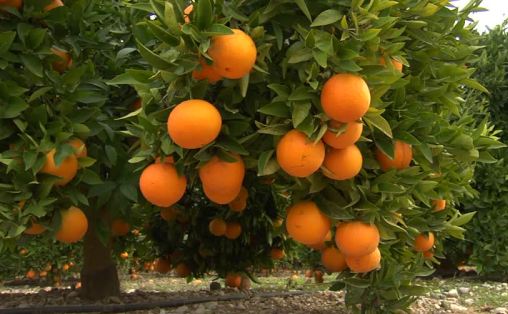
Post harvest in Orange Cultivation:- Oranges (sweet and mandarin) may be treated with etherel for de-greening and development of colour. At low temperature below 25°C low quantity of ethylene can set a change in colour. Oranges should be washed, sorted and graded based on sizes before packing in CFB boxes.
Yield in Orange Cultivation:- Yield of orange crop depends on many factors like, cultivar (variety) being grown, soil type, climatic conditions and orchard management practices. On an average 25 to 30 tonnes/ha can be obtained. When it comes to yield by individual tree, from fourth or fifth year, 40 to 45 fruits per tree can be expected and the crop stabilizes in the 8th year. Average yield for each tree is about 450 to 500 fruits after stabilization.
Marketing of Oranges:- Orange fruits keep well for a long time under ambient conditions and hence can be transported to long distances for marketing. Oranges can be transported to local markets or fruit suppliers can also buy in bulk at the farm. For commercial marketing, contact any fruit processing units or export agents. Market value of oranges depends on the season, quality of fruit. The price of oranges varies from season to season.

Hello my name is tony gosling and i live in Khlong Lan north Thailand Khlong Lan is situated near Khampng Phet, my partner and i we grow cassava and Mango,we are looking at growing some other fruit but we are not too sure which would be Suitable in our climate here could you recommend anything that may be suitable .